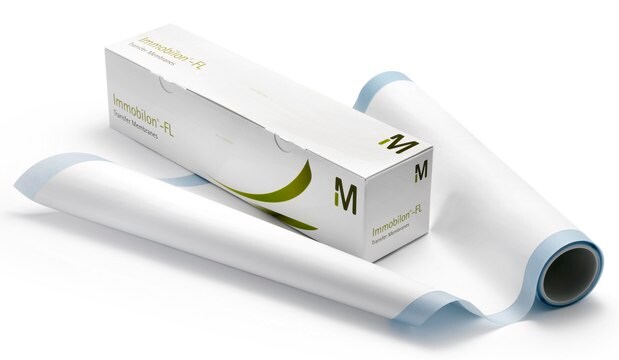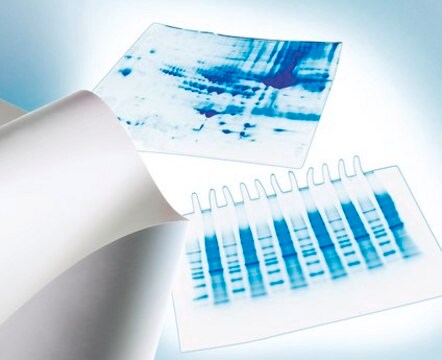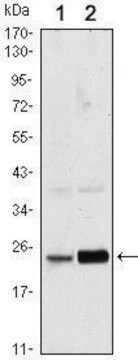MABF2069
Anti-Glucuronoxylomannan (GXM) Antibody, clone 18B7
clone 18B7, from mouse
Synonim(y):
GXM
About This Item
Polecane produkty
pochodzenie biologiczne
mouse
Poziom jakości
forma przeciwciała
purified immunoglobulin
rodzaj przeciwciała
primary antibodies
klon
18B7, monoclonal
reaktywność gatunkowa
mouse
metody
ELISA: suitable
immunocytochemistry: suitable
immunodepletion: suitable
immunofluorescence: suitable
immunohistochemistry: suitable (paraffin)
izotyp
IgG1κ
Warunki transportu
ambient
docelowa modyfikacja potranslacyjna
unmodified
Opis ogólny
Specyficzność
Immunogen
Zastosowanie
Immunodepletion Analysis: A representative lot immunodepleted Glucuronoxylomannan (GXM) in Immunodepletion applications (Lendvai, N., et. al. (1999). J Infect Dis. 180(3):791-801; Casadevall, A., et. al. (1998). Antimicrob Agents Chemother. 42(6):1437-46; Martinez, L.R., et. al. (2004). Infect Immun. 72(6):3674-9; Bowen, A., et. al. (2017). J Biol Chem. 292(2):417-434).
Immunofluorescence Analysis: A representative lot detected Glucuronoxylomannan (GXM) in Immunofluorescence applications (Casadevall, A., et. al. (1998). Antimicrob Agents Chemother. 42(6):1437-46; Bowen, A., et. al. (2017). J Biol Chem. 292(2):417-434).
Immunocytochemistry Analysis: A 1:1,000 dilution from a representative lot detected Glucuronoxylomannan (GXM) in heat killed cryptococcus cells.
Immunohistochemistry Analysis: A 1:50-250 dilution from a representative lot detected Glucuronoxylomannan (GXM) in S. neoformans-infected mouse spleen, mouse lung, mouse liver, and mouse brain tissues.
ELISA Analysis: A representative lot detected Glucuronoxylomannan (GXM) in ELISA applications (Casadevall, A., et. al. (1998). Antimicrob Agents Chemother. 42(6):1437-46; Martinez, L.R., et. al. (2004). Infect Immun. 72(6):3674-9; Bowen, A., et. al. (2017). J Biol Chem. 292(2):417-434).
Inflammation & Immunology
Jakość
Isotyping Analysis: The identity of this monoclonal antibody is confirmed by isotyping test to be mouse IgG1 .
Postać fizyczna
Przechowywanie i stabilność
Inne uwagi
Oświadczenie o zrzeczeniu się odpowiedzialności
Nie możesz znaleźć właściwego produktu?
Wypróbuj nasz Narzędzie selektora produktów.
Kod klasy składowania
12 - Non Combustible Liquids
Klasa zagrożenia wodnego (WGK)
WGK 2
Certyfikaty analizy (CoA)
Poszukaj Certyfikaty analizy (CoA), wpisując numer partii/serii produktów. Numery serii i partii można znaleźć na etykiecie produktu po słowach „seria” lub „partia”.
Masz już ten produkt?
Dokumenty związane z niedawno zakupionymi produktami zostały zamieszczone w Bibliotece dokumentów.
Nasz zespół naukowców ma doświadczenie we wszystkich obszarach badań, w tym w naukach przyrodniczych, materiałoznawstwie, syntezie chemicznej, chromatografii, analityce i wielu innych dziedzinach.
Skontaktuj się z zespołem ds. pomocy technicznej







